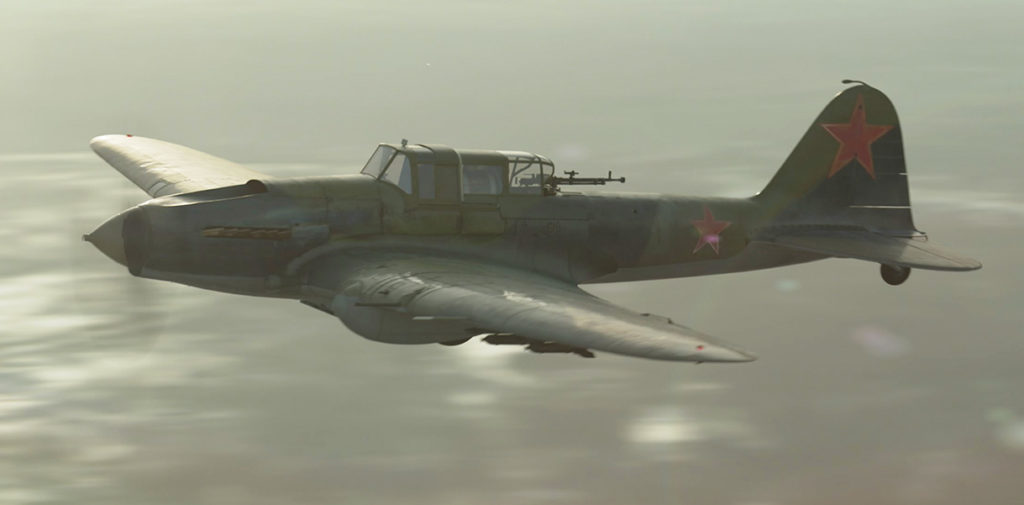As early as World War I, airmen who lost limbs in combat refused to let that keep them out of the air. In the Imperial Russian Navy, Alexander Prokofiev de Seversky lost a leg but learned to fly with a prosthetic and became a six-victory ace and later an airplane designer in the United States. During World War II, he would be outdone by Soviet fighter pilot Aleksey Maresyev, who survived a horrendous ordeal to become a fighter ace with no legs at all. The Pilot: A Battle for Survival is a Russian film that follows the contours of Maresyev’s ordeal.
Born on May 20, 1916, Aleksey Petrovich Maresyev joined the Red Army in 1937 and earned his wings in 1940. In August 1941 he was assigned to the 296th IAP (fighter aviation regiment) in the central Ukraine, flying the Polikarpov I-16. Over the following months, Maresyev was fortunate just to survive while flying that obsolescent airplane. Then, in March 1942, he was reassigned to the 580th IAP in the Demyansk Pocket, equipped with the new Yakovlev Yak-1. In less than a month of intense fighting he was credited with four German aircraft.
On April 5, 1942, Maresyev was shot down in German-held Russian territory in what were still winter conditions. Emerging from the wreck of his Yak with both legs crushed, he crawled toward Soviet lines, living on tree bark and berries for 18 days until he reached a farmhouse. It was another week before he reached a hospital, where his gangrenous legs were amputated.
During his nearly year-long therapy with prosthetics, Maresyev read a magazine article about de Seversky and another on Douglas Bader, the British pilot who lost both legs in a 1931 crash but went on to become an 18-victory ace during the Battle of Britain. Their examples inspired Maresyev to convince his higher-ups he could still fly. In June 1943 he returned to the front, flying Lavochkin La-5s.
“When I was appointed to be his wingman,” said Sergei F. Petrov in an interview, “I asked myself the question: ‘If he has no legs, will he be able to protect me in combat?’ But we carried out a number of missions together and I was convinced that he was a better pilot than many who had legs.”

Released on December 2, 2021, The Pilot is reputedly based on a novelized account of Maresyev’s life. Director Renat Davletyarov has called it his version of the American 2015 film The Revenant, with Nazi pursuers and a pack of wolves substituted for that film’s bear and hostile Indians. Instead of flying fighters, The Pilot’s protagonist, Nikolay Komlev (Pyotr Fyodorov), is a ground attack pilot, allegedly because there were no Yak-1s or La-5s available for the film, but a newly restored and flyable Ilyushin Il-2 was. Historical nit-pickers might point out that two-seater Il-2s and Messerschmitt Me-109Gs were not around in December 1941, the film’s setting. As for differences between the real Maresyev and the fictional Komlev, the whole matter is rendered moot when the end credits list about a dozen other Soviet airmen who lost both limbs but returned to active service, making it clear that Komlev is based on a composite of many “true stories.”
That said, The Pilot delivers visceral thrills during its 106-minute runtime, punctuated at intervals by a series of flashbacks to a developing love story that adds motivation to Komlev’s determination to survive. There is a certain universality to its theme, although Russia’s 2022 invasion of neighboring Ukraine has made a pariah of the country in which The Pilot was filmed.
The real Maresyev returned to combat for the Battle of Kursk on July 20, 1943. He and Petrov each downed a Junkers Ju-87 Stuka, then Petrov was shot up by a Focke-Wulf Fw-190. As a second Fw-190 got on his tail for the coup de grâce, Petrov looked back and saw it explode—courtesy of his legless wingman, who then downed a second Focke-Wulf. On August 24 Maresyev received the Gold Star of a Hero of the Soviet Union (the Russian Medal of Honor) and went on to bring his score up to 11 victories in 86 combat sorties—seven of those victories achieved with artificial legs.
After the war Maresyev continued as a flight instructor until his retirement in 1994. He became the subject of A Story About a Real Man, a novel based on his wartime experiences, and now two fictionalized postwar films. (The first came out in 1948.) In regard to all the adulation that attended him, however, he remarked: “There’s nothing extraordinary in what I have done. The fact that I’ve been turned into a legend irritates me.”
On May 19, 2001, Aleksey Maresyev was en route to attend a ceremony marking his 85th birthday in Moscow when he suffered a heart attack. Rushed to hospital, he died an hour and a half before the ceremony.






